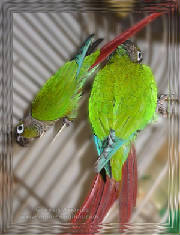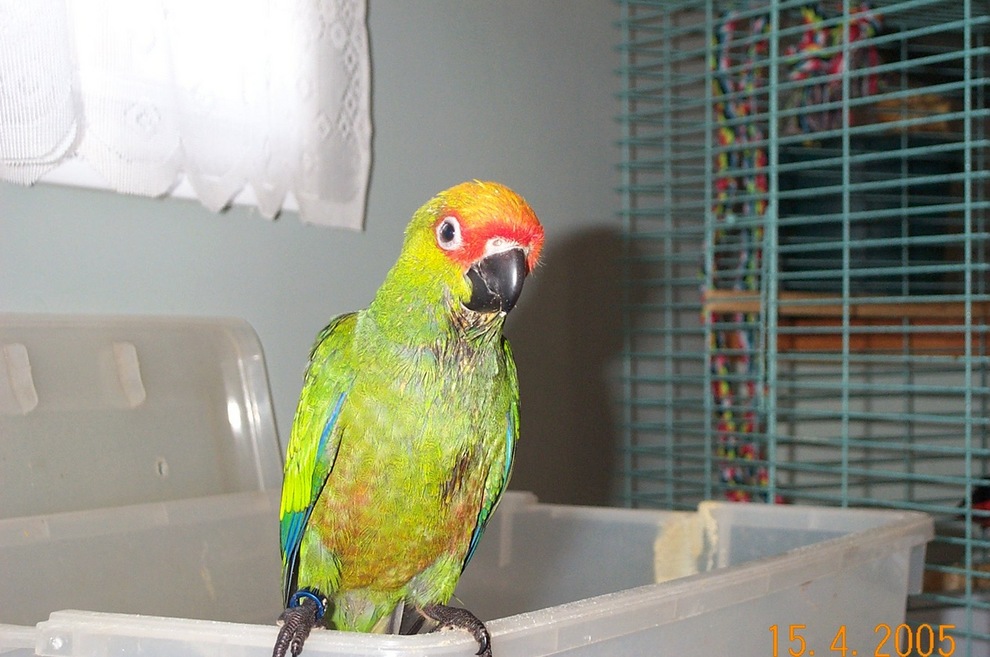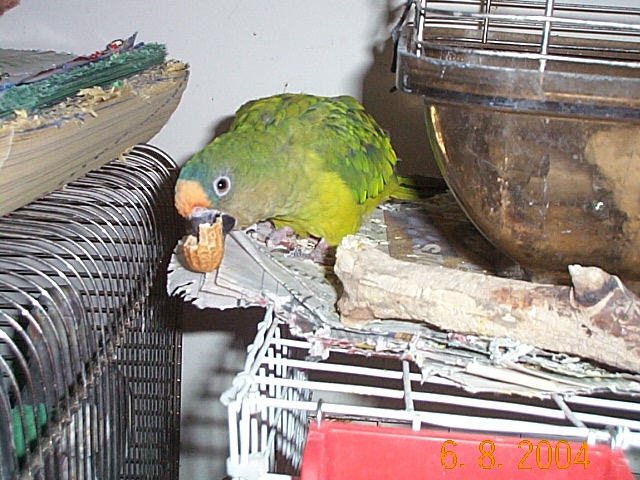|
Feathered Dragons
|
|
|
Conures
Loud, Colorful and Playful as all Heck! |
||||||||||||||||||||||||||||||||||||||||||||||||
|
The first question people ask me when I refer to conures is 'What are they?' . The quick answer is that they're a series of
small, colorful parrot species from South America. I've owned three types of Conures since my first in 2001. Moonie was the
first. Phoenix was my second and I will be breeding Green Cheek Conures as of April 2006. Conures are often compared to feathered
puppies. Most love to cuddle and play. Some will even flip over onto their backs and play with their toys that way. Most will
spend long minutes 'killing' their toys then will growl at you if you dare take them away. Most of the species I've owned
thought they were bigger than they really were. They were bold, brash with lots of attitude. And oy. They LOVED to play!
|
|
|||||||||||||||||||||||||||||||||||||||||||||||
|
Cockatiels and Conures and Finches, OH MY! |
||||||||||||||||||||||||||||||||||||||||||||||||



